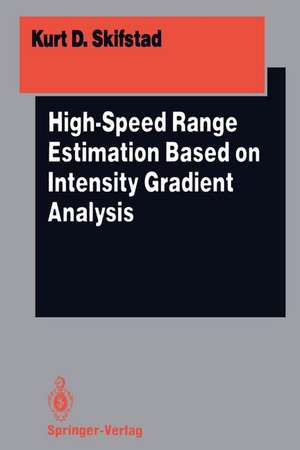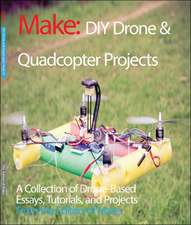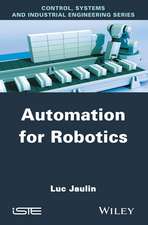High-Speed Range Estimation Based on Intensity Gradient Analysis: Springer Series in Perception Engineering
Autor Kurt D. Skifstaden Limba Engleză Paperback – 26 sep 2011
Preț: 327.44 lei
Preț vechi: 409.30 lei
-20% Nou
Puncte Express: 491
Preț estimativ în valută:
62.66€ • 64.73$ • 52.15£
62.66€ • 64.73$ • 52.15£
Carte tipărită la comandă
Livrare economică 25 martie-08 aprilie
Preluare comenzi: 021 569.72.76
Specificații
ISBN-13: 9781461278016
ISBN-10: 1461278015
Pagini: 196
Ilustrații: X, 182 p.
Dimensiuni: 155 x 235 x 10 mm
Greutate: 0.28 kg
Ediția:Softcover reprint of the original 1st ed. 1991
Editura: Springer
Colecția Springer
Seria Springer Series in Perception Engineering
Locul publicării:New York, NY, United States
ISBN-10: 1461278015
Pagini: 196
Ilustrații: X, 182 p.
Dimensiuni: 155 x 235 x 10 mm
Greutate: 0.28 kg
Ediția:Softcover reprint of the original 1st ed. 1991
Editura: Springer
Colecția Springer
Seria Springer Series in Perception Engineering
Locul publicării:New York, NY, United States
Public țintă
ResearchCuprins
1 Introduction.- 1.1 Purpose.- 1.2 Philosophy.- 1.3 The Structure of This Thesis.- 2 Approaches to the Depth Recovery Problem.- 2.1 Sensing Modalities.- 2.2 Vision as a Primary Mode of Sensing.- 2.3 Literature Survey.- 2.4 Summary.- 3 Depth Recovery.- 3.1 Depth Recovery Using Translational Sensor Motion.- 3.2 Special Case: Axial Camera Motion.- 3.3 Special Case: Lateral Camera Motion.- 3.4 The Parameters Needed for Depth Recovery.- 4 Theoretical Basis for IGA.- 4.1 Acquiring a Sequence of Images.- 4.2 Two Ideas and Their Implications.- 5 Intensity Gradient Analysis.- 5.1 Isolating Fixed Image Displacements Using Intensity Gradients.- 5.2 Why Do More Work?.- 5.3 Extending to Two Dimensions.- 5.4 The IGA Algorithm.- 6 Implementation Issues.- 6.1 Problems with Real-World Sensors.- 6.2 Uncertainty in the Camera Motion Parameters.- 6.3 Moving Objects.- 6.4 Summary.- 7 Fixed Disparity Surfaces.- 7.1 Examples of FDS’s.- 7.2 Interpreting FDS’s.- 7.3 Fixed Disparity Surfaces and Conventional Stereo.- 8 Experiments.- 8.1 Experimental Setup.- 8.2 Calibration Procedures.- 8.4 Outdoor Scenes.- 8.5 Conclusions.- 9 An Application: Vision-Guided Navigation Using IGA.- 9.1 Navigation.- 9.2 Experimental Setup.- 9.3 Experiments.- 10 Conclusion.- 10.1 Future Research.- 10.2 Contribution.

























